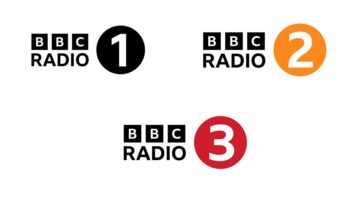Have you recently stopped to think about how much energy your radio broadcasts use?
That was the question the BBC has attempted to answer about both its radio and TV energy consumption in a recently published research report, “The Energy Footprint of BBC Radio Services: Now and in the Future.” The report, which explores the energy footprint of BBC radio services, was initiated to try and understand and improve the environmental impact of BBC services.
The study considered energy use across all available platforms — AM, FM, DAB, digital television and internet streaming — to discover which ones had the largest footprints. The BBC also compared energy use at various stages in the radio chain, including playout, encoding, distribution and audience consumption of content.
“This highlighted the key energy hotspots in the BBC radio system and where best to focus our efforts if we want to reduce our energy footprint,” the BBC said in its announcement.
The research was meant to discover how much electricity is currently used by BBC radio services, the comparative energy use per platform, how this use may change over time and which parts of the system are consuming the most energy.
The BBC found that the total energy required to prepare, distribute and consume radio in its 2018 baseline test was estimated to be 325 GWh, equivalent to 0.1% of U.K. electricity use that year. Of all five platforms, FM was found to have the biggest footprint overall at 100 GWh (31%) and AM the lowest at 25 GWh (8%), with IP (79 GWh; 24%), DAB (65 GWh; 20%) and DTV (56 GWh; 17%) falling in-between.
Not all radio platforms are consumed equally, however. The research found that listening hours on FM and DAB were up to 11 times higher than on AM and DTV. The BBC also calculated the electricity consumption per device hour to find the energy intensity of each platform. This painted a slightly different picture where DTV had the largest footprint at 81 watt hour per device-hour, followed by AM (29 watt-hour/device-hour), IP (23 watt-hour/device-hour), FM (13 watt-hour/device-hour) and lastly DAB which had the smallest at 9 watt-hour/device-hour.
Overall, the BBC found that consumption had the biggest footprint, quite a bit larger than preparation and distribution. Consumer devices used around 73% of the total energy in 2018 compared to 27% for distribution, with preparation using less than 0.1% overall.
“Despite similar findings in our television research, we were again surprised by this result as the transmitter networks for radio services collectively use more power than that for digital terrestrial television,” the BBC said in its report. “However, with the tens of millions of consumer devices which can access radio across the U.K., even low-power audio devices add up.”
According to BBC R&D, the research is the first of its kind to analyze radio energy use. The work piggybacks on the research the company released earlier this year about the environmental impact of BBC television.
The BBC attracts more than 30 million listeners in the U.K. per week through live stations, podcasts and on-demand content. Those radio services are being accessed on a range of consumer devices including smart speakers, smartphones and car audio.










